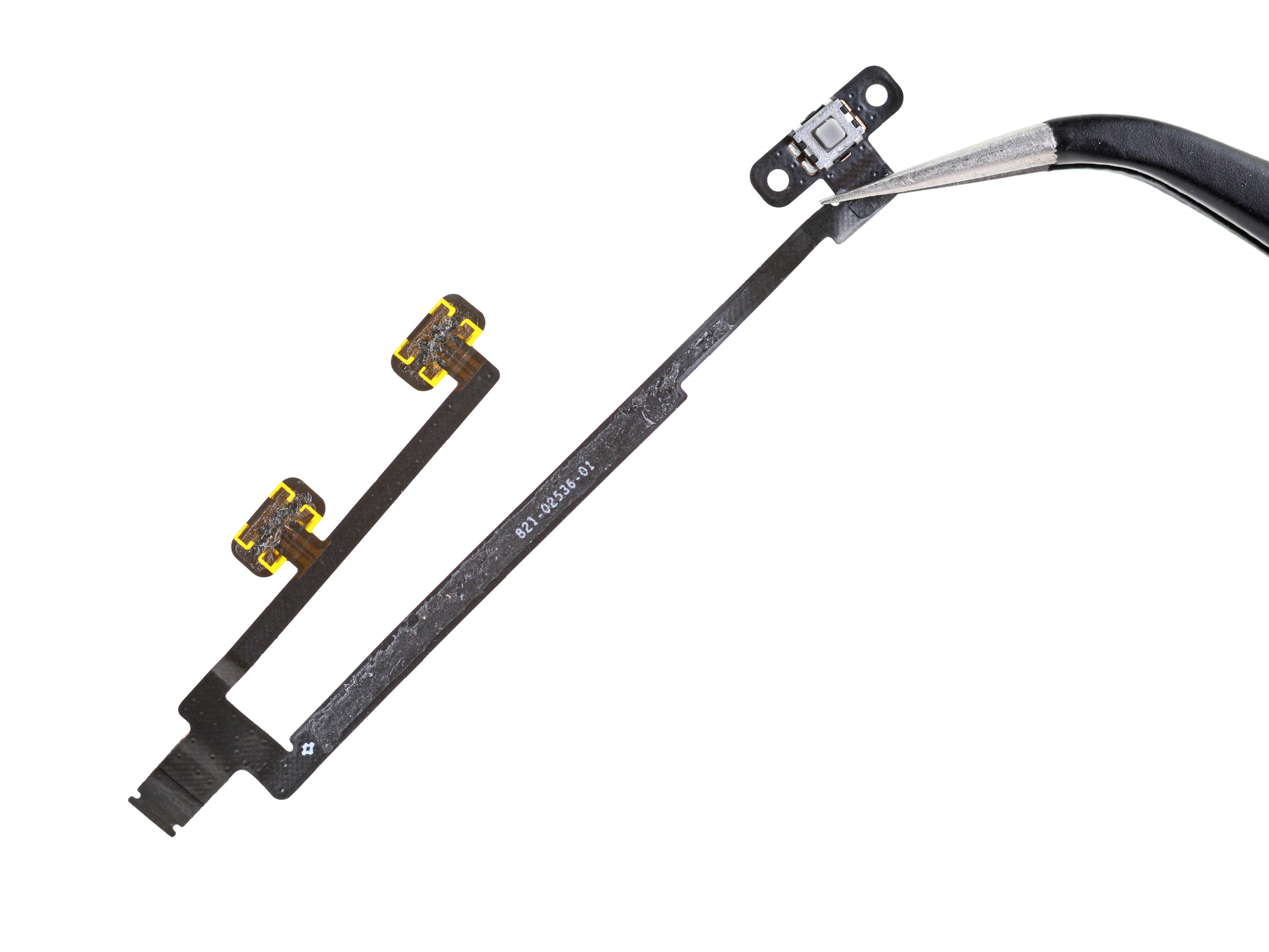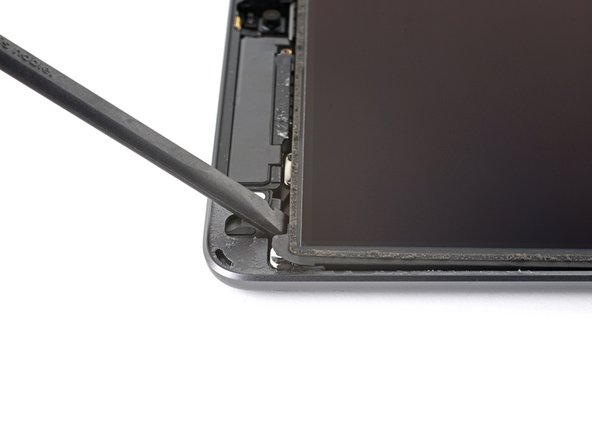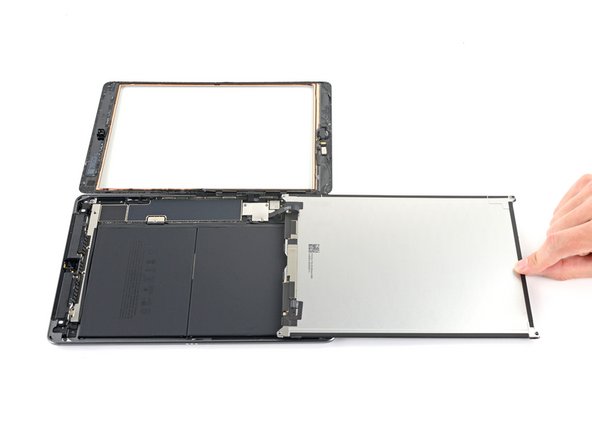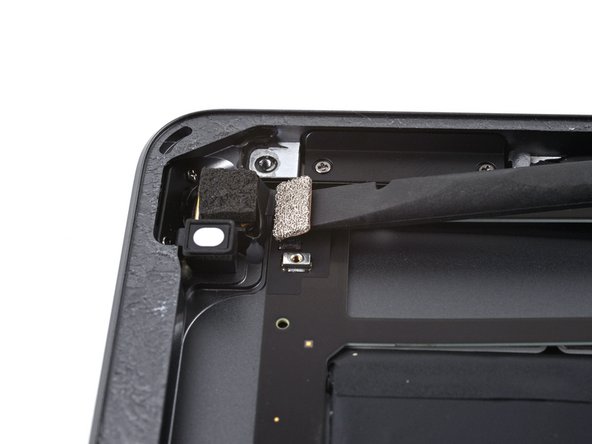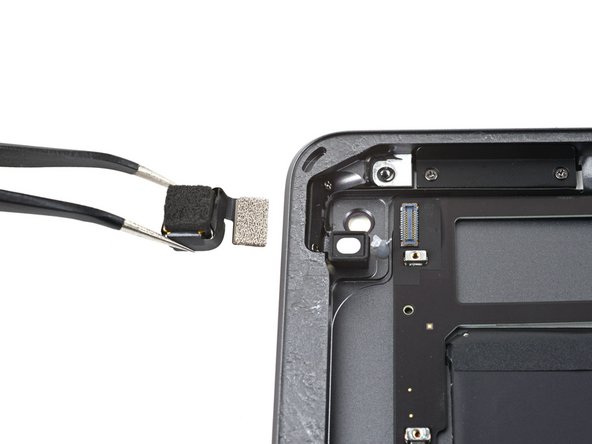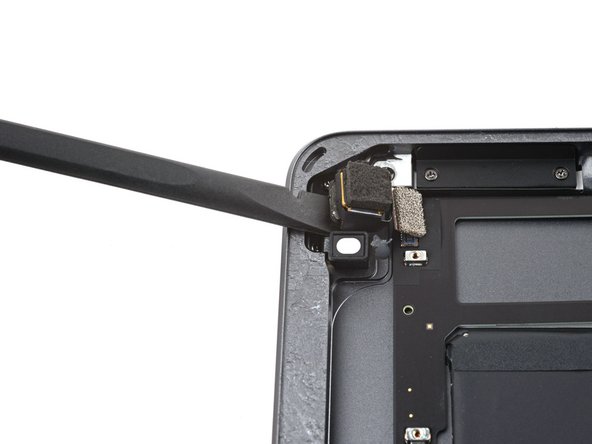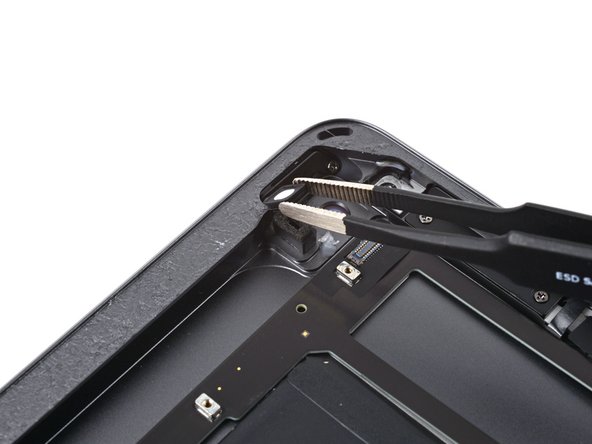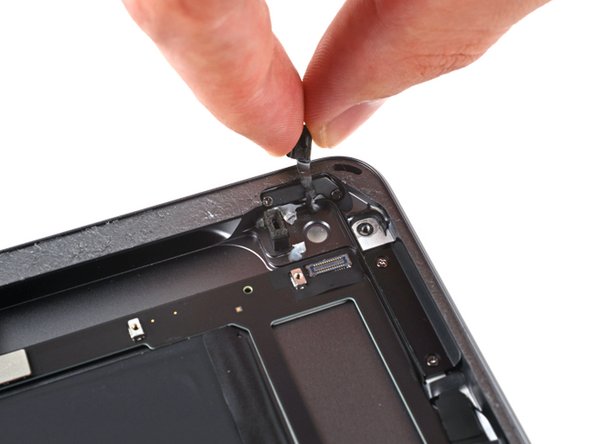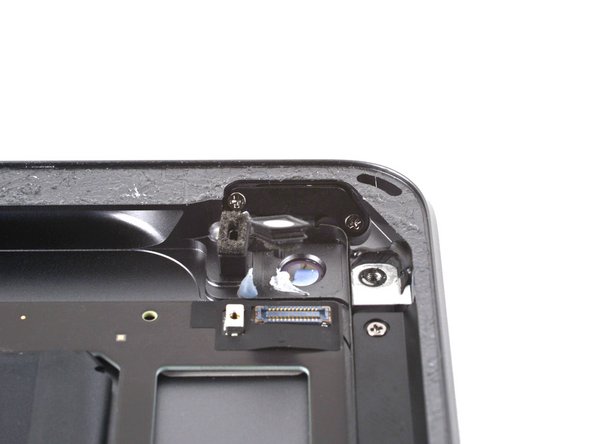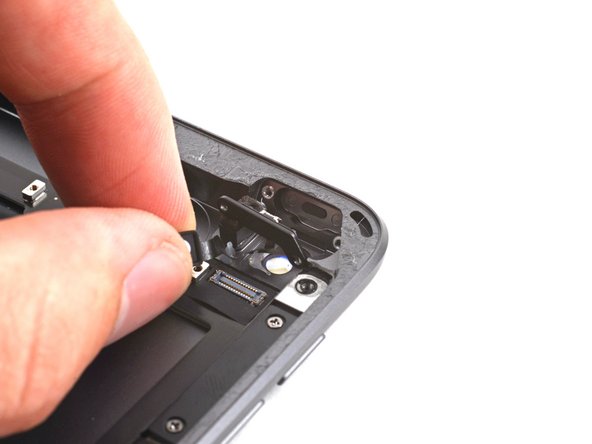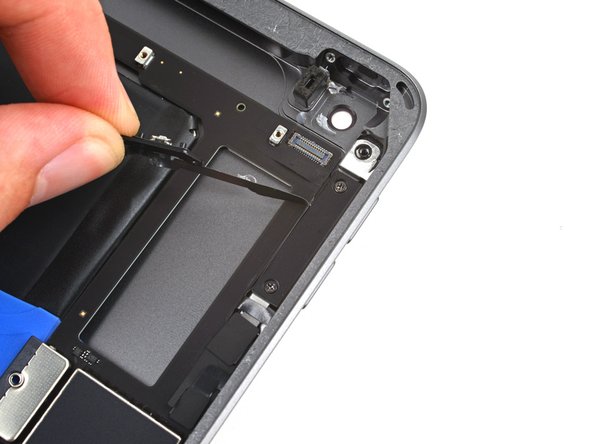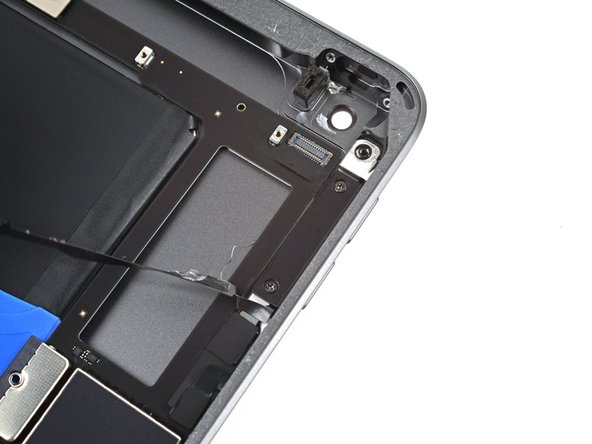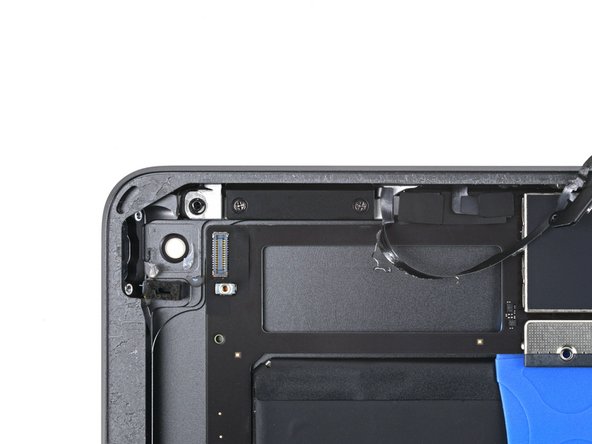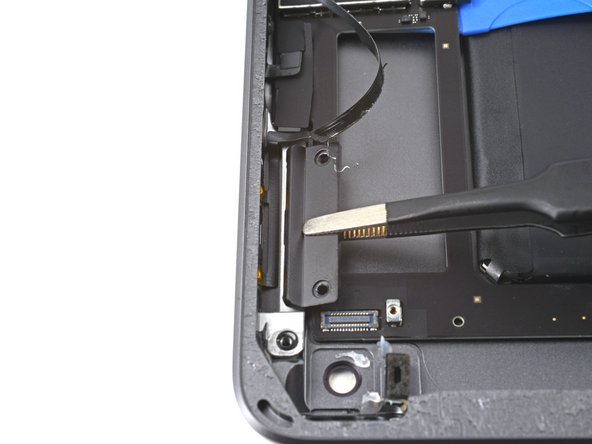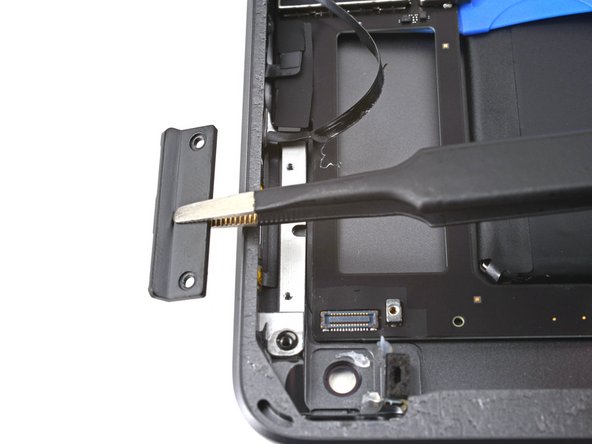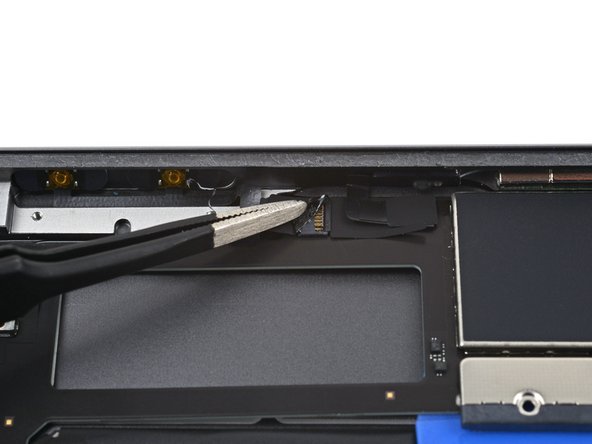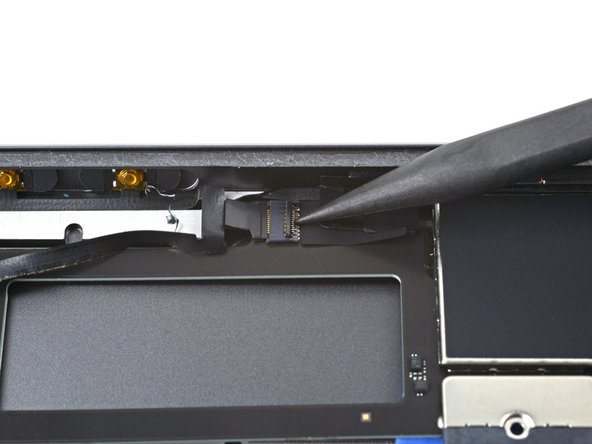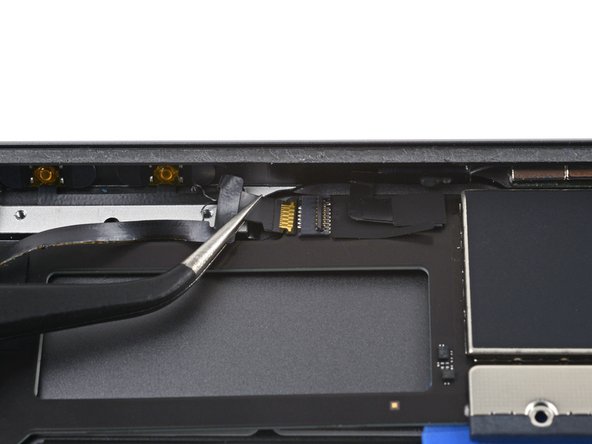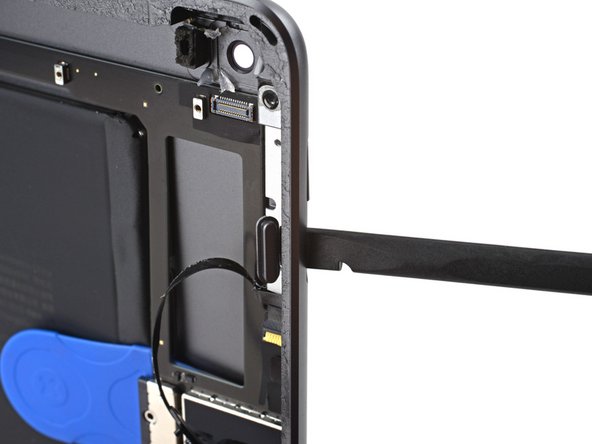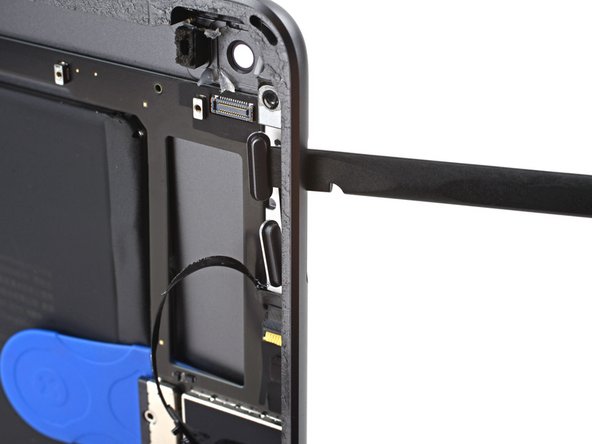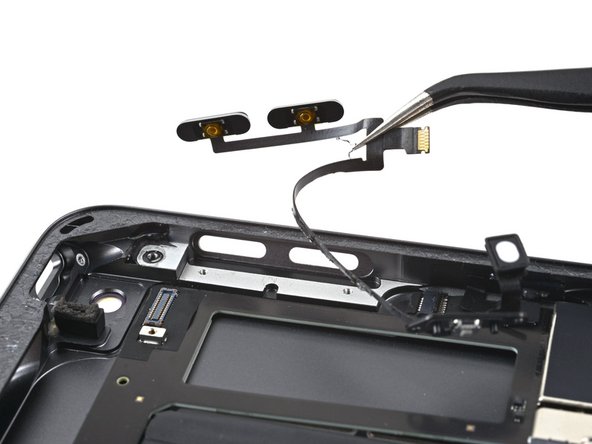iPad 9 LTE Button Control Cable Replacement
Duration: 45 minutes
Steps: 70 Steps
Before you dive in and start the teardown, make sure to juice your iPad battery down to below 25%. It's safer that way, trust us!
Hey, let's swap out that button control cable on your iPad 9 LTE with this guide. Heads up: this is only for the LTE model. For the Wi-Fi version, check out the other guide. This cable bundles the lock and volume buttons, so if any are acting up, time to replace the whole thing. Safety first: drain your battery to under 25% before diving in to cut down on fire risks from any oopsies. If your battery's looking puffy, handle with care. Take it easy when blocking the battery—the contacts can get messed up pretty easily and that's not fixable. If you're skipping the blocker, steer clear of metal tools unless you gotta (like for screws) to avoid zapping the battery or frying electronics. A few pics might be from another model with tiny differences, but no worries, they won't throw off the steps.
Step 1
Alright, let's get started! First things first—make sure your iPad is powered off. You don't want any surprises while you're working on it!
- Warm up an iOpener and stick it on the left side of the iPad for a solid two minutes to soften things up.
Tools Used
Step 2
- Hey, while that adhesive softens up, let's chat about the spots that need extra care when prying—think of them as the VIP zones:
- Front camera
- Ambient light sensors
- Antennas
- Display cables
Step 3
In the next three steps, we'll show you how to use the Anti-Clamp—a handy little tool we designed to make opening your device a breeze. If you're not using the Anti-Clamp, no worries! Just skip ahead three steps for a different method.
Want to get the most out of the Anti-Clamp? We've got you covered with a full guide here.
If the surface of your iPad is a little too smooth for the Anti-Clamp to grip, just stick some tape on it to give it a little extra traction.
- Gently pull the blue handle back to unlock the arms of the Anti-Clamp.
- Place something under your iPad to keep it level and snug between the suction cups.
- Position the suction cups about halfway along the left edge—one at the top, one at the bottom.
- Keep the bottom of the Anti-Clamp steady and give a firm press on the top suction cup to get a good grip.
Step 4
- Grab that blue handle and pull it forward to lock the arms in place—let's get this secured!
- Twist the handle clockwise, going a full 360 degrees or until the cups start to stretch out a bit.
- Keep those suction cups lined up nice and straight. If they start to drift out of alignment, loosen them just a tad and realign the arms.
Step 5
Keep it steady—crank no more than half a turn each time, and pause for a minute between. Let the Anti-Clamp and a bit of patience take care of the rest.
Want to know how to use a hair dryer like a pro? Check out this guide for all the deets.
If the Anti-Clamp isn't creating enough of a gap, just give it a little extra heat and twist the handle clockwise about half a turn.
- Give the adhesive a minute to relax and create a little breathing room for you.
- If the screen's not warming up enough, try using a hair dryer along the left edge of the iPad to give it some extra heat.
- Gently slide an opening pick under the digitizer when the Anti-Clamp has made a big enough gap.
- Feel free to skip the next step.
Step 6
- Once the screen feels nice and toasty to the touch, grab your suction handle and place it right on the left edge of the screen, hugging the edge as closely as you can.
- Gently lift up that screen with the suction handle to open up a tiny gap between the digitizer and the frame.
- Slide an opening pick into that gap you've created between the digitizer and the frame.
If your screen is badly cracked, don't sweat it! Try covering it with a layer of clear packing tape – this can help the suction cup stick better. If that doesn’t work, you can swap the suction cup for some strong tape instead. And if all else fails, a little superglue on the suction cup might do the trick to keep it in place. Need extra help? You can always schedule a repair.
Tools Used
Step 7
No need to stress if the opening pick is peeking through the digitizer — just go ahead and pull it out. The LCD screen should stay safe, but watch out for any sticky adhesive residue that might be tough to clean up!
- Pop in a second opening pick into that gap you just created.
- Slide it smoothly toward the bottom-left corner of the iPad to peel away the adhesive.
- Leave the pick chilling in the bottom-left corner to keep the adhesive from re-sealing.
Step 8
- If the opening pick gets a little stuck in the adhesive, don't stress! Just 'roll' the pick along the side of the iPad to keep separating the adhesive smoothly.
Step 9
- Gently slide that opening pick up toward the top-left corner of the iPad to loosen the adhesive.
- Leave the pick chilling in the top-left corner to keep the adhesive from sealing back up.
Step 10
- Warm up an iOpener and place it on the top edge of the iPad for a solid two minutes to loosen things up.
Tools Used
Step 11
Gently slide the pick in, but keep it to 7 mm max so we don’t mess with that delicate ambient light sensor.
- Gently work the pick around the top-left corner of your iPad to break free the adhesive. No rush, just a smooth move!
Step 12
Hey, steer clear of sliding that pick over the front camera to avoid scratching the lens. The next steps will show you how to dodge that.
- Gently glide the opening pick along the top edge of the iPad, but stop just before you hit the front camera.
Step 13
- Pull the pick out until just the tip is snugly between the digitizer and the frame.
- Gently slide the pick above the front camera to start loosening the adhesive.
- Keep the pick close to the right side of the front camera before moving on to the next step.
Step 14
- Pop the pick back in and slide it up towards the top-right corner of the iPad to break that top adhesive free.
- Keep the pick in the top-right corner to stop the adhesive from sticking back together.
Step 15
- Warm up your iOpener and give it a nice 2-minute break on the right edge of your iPad. Let that heat work its magic to soften things up.
Tools Used
Step 16
Hey, just slide the pick in up to 4 mm to keep that ambient light sensor safe.
- Gently rotate the pick around the top-right corner of your iPad to carefully break the adhesive seal.
Step 17
Hey, those display cables are chilling about midway from the bottom of your iPad. Just slide to a stop when you're three inches from the bottom – you've got this!
- Grab a fresh opening pick and gently slide it along the right edge of your iPad, aiming for the center. Easy does it—you're on the right track!
Step 18
- Warm up an iOpener and press it gently to the bottom edge of your iPad. Let it sit there for about two minutes to soften up any adhesive. You've got this!
Tools Used
Step 19
Take it easy when rotating the pick around the corner! Going too far could damage the antenna. Stay gentle and steady for the win!
The third image shows the antenna tucked away on the bottom-left side, right beneath the digitizer.
- Ease that bottom-left pick toward the corner to break up the adhesive.
- Keep the pick tucked in the corner as you gear up for the next step.
Step 20
Slide the pick towards the home button like a champ, but steer clear of going the other way—you might ding the antenna!
If you need to glide the pick across this area again, just pop it out and insert it from the bottom-left corner. Keep at it—you got this!
- Pop a fresh opening pick into the gap you made at the bottom edge of your iPad.
- Gently slide the pick across the antenna, stopping just short of the home button.
- Make sure to leave the pick to the left of the home button before you keep going.
Step 21
- Gently slide an opening pick into the gap you've made. Take it easy—no need to force anything!
- Now, carefully slide the pick under the home button, moving it toward the bottom-right corner. Just make sure only the tip of the pick is tucked between the digitizer and the frame. Steady hands, you've got this!
Step 22
Slide that pick straight toward the home button, pal—going the other way could wreck the antenna, and we want to avoid that hassle!
If you gotta slide the pick over this section again, just pop it out and slot it right back in at the bottom-right corner.
- Slide the pick back in and glide it toward the home button to fully release the bottom adhesive.
- Leave the pick positioned to the right of the home button before you proceed.
Step 23
- Warm up that iOpener and apply it to the right edge of the iPad for two minutes.
Tools Used
Step 24
Hey, take it slow and easy here! Make sure the adhesive is nice and warm before you dive in, and double-check you've separated all of it with that opening pick. No rush—pause and reheat if you need to.
If you're feeling some serious resistance, just give the edges another quick heat and gently work along them with your opening pick.
- Gently twist the two opening picks at the left corners of your iPad. This will lift the digitizer just a bit, breaking the final bits of adhesive and getting you one step closer to success.
Step 25
- Gently lift the left edge of the digitizer upward to loosen up that adhesive along the right side of the iPad.
Step 26
Take it easy with that opening pick! The two display cables are delicate, so make sure to avoid any accidental snags or tugs while you're working around them.
- While holding the digitizer in place, gently slide an opening pick between the two display cables to separate the last bit of adhesive. Take your time and be careful—it’s all about precision!
Step 27
- With all that adhesive peeled away, flip open the digitizer like you're cracking a favorite book and lay it flat next to the iPad.
- When putting things back together, wipe off any leftover adhesive from the frame with isopropyl alcohol—do the same for the digitizer if you're reusing it. Pop in fresh adhesive using our adhesive strips or pre-cut cards.
- Watch those display cables during reassembly—fold them neatly under the LCD screen to keep everything safe and sound.
Step 28
- Grab some tweezers or your fingers to peel off any tape covering those LCD screws.
Tools Used
Step 29
- Grab your trusty Phillips #00 screwdriver and carefully remove the four 4.2 mm screws holding the LCD screen in place. You’ve got this!
Tools Used
Step 30
The LCD is gently sticking to the frame, so it's not too hard to separate. Just be careful when you’re working around it!
- Slide a spudger gently between the frame and the top-right corner of the LCD.
- Carefully pry with the spudger to loosen the adhesive and create some space.
Tools Used
Step 31
- Now, move on to the top-left corner of the LCD and repeat the same steps to get that section looking sharp.
Step 32
Be careful not to fully detach the LCD just yet! It's still connected by a flex cable, so leave it hanging for now.
- Grab your spudger and use its flat end to gently pry the LCD out of its spot—just enough to get a solid grip with your fingers. Nice and easy!
- Now, flip the LCD like turning a page in a book: lift near the camera and swing it over to the home button end of the frame. You're doing great!
- Set the LCD down on a clean, soft surface that's lint-free to give yourself easy access to the display cables. Smart thinking!
Tools Used
Step 33
- Grab your trusty Phillips screwdriver and carefully remove the 2.3 mm screw that’s holding the battery connector to the logic board. Easy does it!
Step 34
Take a look at these photos—they show the battery connector tucked under the logic board. Keep 'em handy as a guide while you carefully disconnect the battery.
Check out those cantilever springs on the logic board; they press against the battery's contact pads. With both the board and battery glued in place, slide something thin and flexible between the contact points to safely separate the battery.
Step 35
Hey, go easy on the battery when using that blocker—the contacts are delicate and can bend or snap, leading to irreversible damage.
Position the battery blocker with its logo facing up, like it's ready for the spotlight.
Ease that battery blocker under the connector gently—don't muscle it in! If it's putting up a fight, grab a playing card to disconnect the battery instead.
The battery blocker or playing card should glide smoothly under the logic board without any hiccups. Once inserted, let it settle at a cool 15-degree angle.
- Gently slide the battery blocker under the logic board's battery connector at a 35-degree angle.
- Keep the battery blocker in place as you tackle the next steps.
Tools Used
Step 36
- Grab your trusty Phillips screwdriver and carefully unscrew the three tiny 1.4 mm screws holding down the display cable bracket.
Step 37
- Time to get that display cable bracket out of the way. Gently remove it and keep it safe for later. You’re doing great!
Step 38
- Grab the flat end of your spudger and gently pry up to disconnect that LCD cable connector.
- When re-attaching press connectors like this, line it up carefully and press down on one side until it clicks into place, then do the other side. Skip the middle—pressing there can bend the pins and lead to permanent damage.
Tools Used
Step 39
- Gently lift the LCD off and place it face down on a clean, soft surface that’s free of lint. This will help keep things smooth and scratch-free!
Step 40
- Snag your tweezers and carefully peel back the tape over the home button cable ZIF connector—nice and easy!
Tools Used
Step 41
- Grab a spudger, opening tool, or just your trusty fingernail to gently lift that little hinged locking flap on the home button cable ZIF connector. It's like opening a secret compartment, but much easier!
Tools Used
Step 42
- Grab your tweezers and gently tug the home button ribbon cable straight out of the ZIF connector – you've got this!
Tools Used
Step 43
Be gentle and only pry on the connectors themselves—avoid tugging on the logic board socket to keep your iPad safe and sound.
- Grab your spudger and use the flat end to gently pry up and disconnect the two digitizer cable press connectors. Nice and easy, no rush!
Tools Used
Step 44
Be gentle with that home button ribbon cable—avoid poking any holes or tearing it up!
- Take your spudger and use the flat end to gently lift up the buffer block located near the bottom-right corner of your iPad.
- Once it's loose, go ahead and remove the buffer block.
Tools Used
Step 45
The home button cable is gently held in place with a bit of light adhesive. A little wiggle and it should come right off, no problem!
- Grab your trusty pair of tweezers and carefully lift the home button cable off the frame. Nice and steady, you’ve got this!
Tools Used
Step 46
Use an opening pick to carefully slice through any leftover adhesive that might still be holding the front panel to the frame.
Without the right insulation, those areas of the digitizer could short out and cause touch issues. Not fun, right?
The insulation is super stealthy—it's not visible to the naked eye and is a different beast than the foam dust barrier strips you often see on iPads.
- Start by carefully removing the front panel assembly.
- If you're noticing some unexpected touch issues like 'ghost' touches after swapping out the display, no worries! You can fix that by adding a super thin layer of insulating tape (think Kapton tape) to the marked areas on the back of the panel. The replacement digitizers usually come with everything you need, so this step may not even be necessary.
- Before you put everything back together, be sure to clean up any leftover adhesive on the iPad. Grab some high-concentration isopropyl alcohol (90% or higher) and a lint-free cloth to scrub the glued areas. This will help prep your iPad for the new adhesive and make sure it sticks like it’s supposed to.
- Once that’s all cleaned up, test your iPad to make sure everything’s functioning properly. Then, go ahead and apply the pre-cut adhesive strips to the back of the display using our display adhesive guide before sealing everything up nice and tight.
Step 47
- Gently lift the LCD buffer tape away from the upper component bracket, taking care not to rush it!
Step 48
- Grab a Phillips #00 screwdriver and loosen up the five screws that are holding the upper component bracket in place:
- Three screws, each 1.4 mm in length
- Two screws, each 1.9 mm in length
Tools Used
Step 49
- Grab your trusty spudger and use its pointed end to gently lift the upper component bracket. Once it’s up, you’ll be able to easily grab it with your fingers and pull it free!
Tools Used
Step 50
- Gently peel back the upper component bracket from the tape using your fingers. A little wiggle might help!
- Carefully remove the upper component bracket, keeping everything neat and tidy.
Step 51
- With the flat end of your spudger, gently pry up and disconnect the rear camera's press connector.
Tools Used
Step 52
- Warm up that iOpener and give the rear camera a cozy 30-second hug. It'll make things smoother for you, promise!
Tools Used
Step 54
The right ambient light sensor is gently stuck to the frame. You may need to give it a little nudge to get it loose!
- Grab your tweezers or just use your fingers, and gently lift out the sensor. Easy does it!
Tools Used
Step 55
- Gently peel the right ambient light sensor towards the right edge of the device. Just enough to reveal the screw hiding behind it. Easy does it—no rush!
Step 56
- Grab your Phillips screwdriver and twist out those two 2.3 mm-long screws holding the lock button bracket in place.
Step 57
- Gently wiggle the power button bracket with your fingers and lift it out of its little home.
Step 58
Hey, the button control cable is lightly glued to the side of the volume button bracket.
- Gently peel the button control cable away from the volume button bracket – take it slow!
Step 59
- Grab that trusty Phillips screwdriver and give those two 2.2 mm screws a twist to free up the volume button bracket from the rear case—smooth sailing ahead!
Step 60
- Grab your tweezers or just use your fingers to gently wiggle the volume button bracket away from the edge of your device.
- Carefully lift and take off the volume button bracket.
Tools Used
Step 61
- Carefully peel off any tape hiding the button control cable's ZIF connector – nice and easy!
Step 62
- Grab your trusty spudger tip, an opening tool, or even your fingernail, and gently lift that small, hinged locking flap on the button control cable's ZIF connector. Nice and easy—just a little flip and you're on your way!
Tools Used
Step 63
- Grab your tweezers and gently wiggle that button control cable right out of the ZIF connector, nice and straight!
Tools Used
Step 64
- Grab the flat end of your trusty spudger and gently nudge those volume buttons right out of their cozy spots in the rear case. A little push and they'll pop right out!
Tools Used
Step 65
Once the button control cable is removed, the lock button might start to feel a little loose. It's all part of the process!
- First, gently disconnect the button control cable. It’s easier than you think!
- When you're putting everything back together, don’t forget to carefully set the power button into its rightful place. It’s the little things that make a big difference!
Step 66
- Warm up an iOpener and place it on the button control cable for about 30 seconds to loosen things up.
Tools Used
Step 67
- Snag the upper volume button with a pair of tweezers for a solid grip.
- Slip an opening pick between the volume control cable and that upper volume button.
- Carefully peel the volume control cable off the upper volume button.
Tools Used
Step 68
- Give that volume control cable on the lower button the same gentle peel treatment you just did.
Step 69
- Grab a pair of tweezers and get a solid grip on the power button bracket.
- Slide a halberd spudger or opening pick between the power button bracket and the button control cable.
- Gently peel the button control cable up and off those pegs on the power button bracket.
- When putting it back together, use some Tesa tape to reattach the volume buttons and lock button bracket to the button control cable.
Tools Used
Step 70
- To put your device back together, just follow these steps in reverse.
- Drop off any old parts at an R2 or e-Stewards certified recycler to keep things eco-friendly.
- Didn't go as planned? Give basic troubleshooting a try, or if you need a hand, schedule a repair.
-
